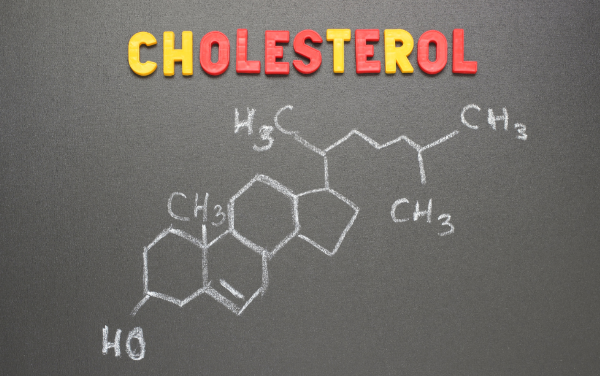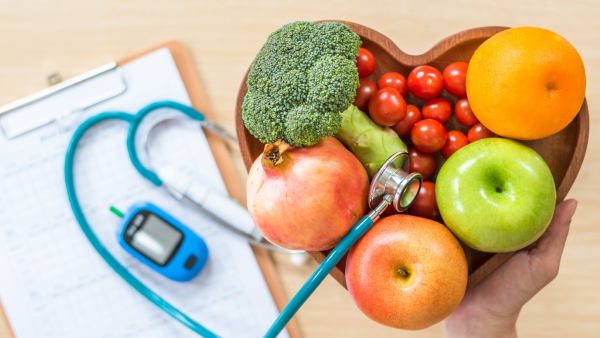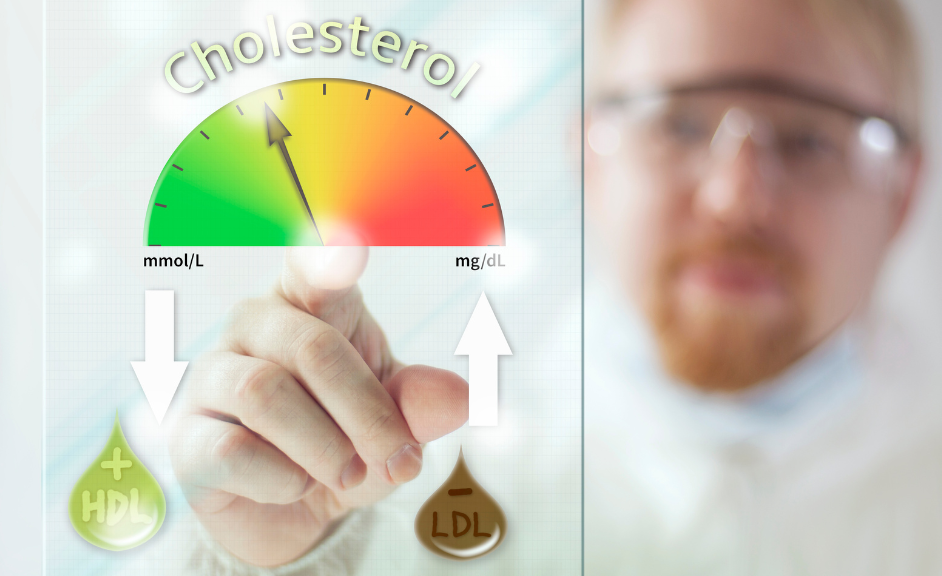Do you know the different types of cholesterol? Many people believe cholesterol is bad due to its association with heart disease. That’s only half the story. We look at the different types of cholesterol and how it’s important for our bodies.
What is cholesterol?

Cholesterol is a waxy fat-like substance found in our blood. Many people have the misconception that cholesterol is bad due to its linkages to heart disease. However, our bodies need cholesterol to work and function. Without it, we couldn’t survive.
Cholesterol is mostly made by our bodies in the liver to keep our bodies functioning properly. This cholesterol is known as blood cholesterol as it circulates the body in the bloodstream. Usually, our bodies will make most of the cholesterol we need.
We also get cholesterol from the food we eat, referred to as dietary cholesterol. Animal-sourced produce also contains cholesterol. Foods such as egg yolks, milk, cheese, meat, and seafood all contain additional cholesterol that our bodies use.
Why is cholesterol important?

Cholesterol is extremely important for our bodies. In particular, cholesterol is essential for our brains, skin, and nerves. It’s that important, you’ll find cholesterol in every cell within your body. Cholesterol in our bodies travels through the bloodstream in particles called lipoproteins.
Cholesterol plays an important role in our bodies. It is used mainly for cell production to create the outer membrane of cells. Cholesterol also helps our bodies to make vitamins, such as vitamin D, and bile for digesting fats.
Cholesterol and other blood fats, such as triglycerides, cannot be transported loosely in our blood. That’s why the liver packs them into lipoproteins. All this happens in a complex process to allow the fats to transport around the body.
However, too much cholesterol in our bodies can lead to problems. Too much cholesterol can lead to deposits in our bloodstream. These deposits stick and clog our arteries. Eventually, this can lead to heart disease and a much-increased risk of heart attacks and strokes.
What are the different types of cholesterol?

Understanding the different types of cholesterol is important for keeping a healthy level. There’s the good kind and the bad kind. Each type of cholesterol is determined by the lipoprotein that transports cholesterol through our bodies. These are LDL and HDL.
LDL cholesterol

LDL cholesterol is usually referred to as the bad kind. Short for low-density lipoprotein, it makes up the most cholesterol in our bodies. However, excessive amounts can lead to arteries clogging up. High LDL cholesterol levels increase your risk of heart attacks and stroke.
LDL cholesterol is the type of cholesterol that is transported around our bodies. It’s unhealthy levels of LDL cholesterol that lead to an increased risk of health problems. The higher your LDL cholesterol, the greater risk your arteries will clog with fatty deposits and lead to more serious health issues.
You cannot completely remove LDL cholesterol (otherwise we wouldn’t be able to produce cells). However, the lower the levels, the better. When testing for your cholesterol level, any LDL cholesterol or non-HDL shouldn’t be higher than 4mmol/L (millimoles per litre).
What increases LDL cholesterol?
Several factors can increase your LDL cholesterol besides your diet:
- Diets high in saturated fats, including fatty meats, full-fat dairy, red and processed meats, fried and fast foods, and baked treats.
- Being overweight or obese
- High blood pressure
- Smoking or excessive drinking
- A close family member with high cholesterol
- Women after menopause
- Age, particularly those above 40
- Ethnicity with varying cholesterol levels by race and ethnicity
- Inactive lifestyle
HDL cholesterol

HDL cholesterol is the good kind that regulates the amount of LDL cholesterol. HDL cholesterol is used to pick up and carry any LDL cholesterol from our bloodstream back to the liver. Then, any excess LDL can be broken down and reused or excreted from the body.
It is important to remember though that a high HDL level doesn’t counteract your LDL level. Around one-third of cholesterol is carried by HDL. Instead, HDL helps in the process of removing the excess your body doesn’t need. That’s why it’s important to have a healthy HDL level.
When testing for your cholesterol level, HDL or good cholesterol should be more than 1mmol/L for males and more than 1.2mmol/L for females. Similarly, a total cholesterol level or total cholesterol level to HDL ratio should be less than 5mmol/L.
What increases HDL cholesterol?
As with LDL, there are several ways you can maintain a healthy HDL cholesterol level:
- Keep physically active
- Maintain a healthy body weight
- Choose healthy fats, such as extra virgin olive oil
- Be mindful of the amount of carbohydrates you eat
- Eat a healthy and balanced diet
- Stop smoking
- Drinking in moderation
Other factors such as taking certain medications and metabolic syndrome can lower your HDL levels.
How do you find out your cholesterol levels?

If you are worried about your cholesterol levels or at a high risk of developing heart disease, you can arrange to get a cholesterol check. In the UK, anyone aged over 18 can register for a check-up. While you can get home test kits, it is a good idea to also get tested by a healthcare professional.
You may also want to consider getting a cholesterol test based on age (those over 40), overweight or suffering from other medical conditions, such as diabetes or high blood pressure. As high cholesterol does not show any symptoms, all the more reason to get checked.
There are 2 ways you can have a cholesterol test; by taking blood from your arm or pricking your finger:
- Taking blood from the arm using a needle. The blood is sent to a lab for analysis with the results available in a few days. Sometimes, you may be asked to fast before the test.
- Finger prick tests prick your finger to take a small drop of blood from your finger. The blood is put onto a strip of paper that is entered into a machine. Results are available in a few minutes.
When attending a check-up, you may be asked questions about your diet and lifestyle, e.g., whether you smoke or drink (as these increase your cholesterol). If your results return high, you will be guided through some steps you can take to reduce your cholesterol levels.
The results may include:
- Total cholesterol (the overall amount of good and bad cholesterol)
- Total cholesterol to HDL ratio (the amount of good cholesterol compared to the total)
- Good cholesterol (HDL)
- Bad cholesterol (LDL and non-HDL)
In some cases, you may also be to find out if you are at risk of having a heart attack or stroke within the next 10 years. Various factors are used to determine this, including your cholesterol level, blood pressure, height & weight, and age, sex & ethnicity.
Taking the necessary steps to help lower your cholesterol is essential. Reducing your cholesterol level can help minimise your risk of heart disease. That’s why it’s important to get checked out if you are worried or are at a higher risk (such as a family history of heart disease).
Understanding the different types of cholesterol is important to help you maintain a healthy level. Knowing the factors that can help increase your good cholesterol while keeping your bad cholesterol low will minimise your risk of more serious health issues. If you are unsure or concerned about your cholesterol levels, book yourself for a cholesterol test.

